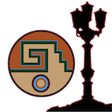Speaker
Description
PAUS is a 40 narrow-band imaging survey using the PAUCam instrument installed at
the William Herschel Telescope (WHT). Since the survey started in 2015, this
instrument has acquired a unique dataset, performing a relatively deep and
wide survey, but with a simultaneous excelled redshift accuracy. The survey
is a compromise in performance between deep spectroscopic survey and wide
field imaging, showing an order of magnitude better redshift resolution
than typical broad band surveys.
The survey data reduction was designed based on classical data reduction
techniques. For example the redshift template fitting needed a different
algorithm to properly handle the PAUS data (Eriksen 2019). While the data
reduction and redshift estimation worked, it had room for improvements.
In this talk, we detail the different efforts of replacing steps in the
PAUS data reduction with deep learning algorithms. First, deep learning
techniques obtain a 50 per.cent reduction in the photo-z scatter for
the fainted galaxies. This is achieved through various techniques,
including using transfer learning from simulations to handle a small
data set.
Furthermore, we have constructed multiple algorithms to improve the
data reduction stage. Noise estimation from background estimation from
a non-uniform background was handled in BKGNet (Cabayol-Garcia 2019),
the galaxy photometry (light measure) was introduced with Lumus
(Cabayol-Garcia 2021). Recent work includes the effort of directly
estimating the galaxy distance from images. In this talk we also
discuss the challenges encountered by differences between the
survey fields and recent advances in applying unsupervised denoising
techniques.
Significance
Introduced the techniques for training on simulations for improving the
redshift estimations, image background subtraction and flux estimation.
This can also be relevant for large broad band surveys, like LSST and
Euclid.
References
-
Eriksen 2019, "The PAU Survey: early demonstration of photometric redshift
performance in the COSMOS field", MNRAS, Volume 484, Issue 3, April 2019, Pages 4200–4215 -
Eriksen 2020, "The PAU Survey: Photometric redshifts using transfer learning from simulations",
MNRAS, Volume 497, Issue 4, October 2020, Pages 4565–4579 -
Cabayol-Garcia 2020, "The PAU Survey: background light estimation with deep learning techniques",
MNRAS, Volume 491, Issue 4, February 2020, Pages 5392–5405, -
Cabayol-Garcia 2021, "The PAU survey: estimating galaxy photometry with deep learning",
MNRAS, Volume 506, Issue 3, September 2021, Pages 4048–4069
| Experiment context, if any | The PAU Survey (PAUS) |
|---|
